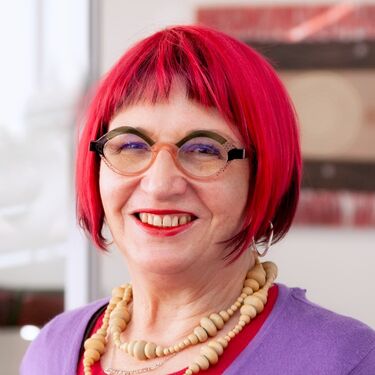
'Ask an Expert: Q&A' is a place for health professionals to ask our team of experts about cases seen in work and/or clinical practice.
Questions can cover a wide range of women’s health topics and will be answered by an expert in the multidisciplinary Jean Hailes health professional team. Read more about this series or learn how to ask a question here.
If you are not a health professional but have your own health question, visit our 'Ask Dr Jean' pages.
Answering your questions for February's edition of 'Ask an Expert: Q&A' is Dr Elizabeth Farrell, Jean Hailes gynaecologist and medical director.
Amongst the antidepressants, is there one that has better efficacy in managing hot flushes?

From Jean Hailes gynaecologist and medical director Dr Elizabeth Farrell (pictured)
Non-hormonal therapies, such as the antidepressants, are prescribed when there is a contraindication to MHT or when a woman prefers not to take MHT.
Venlafaxine is the most studied antidepressants but other SNRIs and SSRIs are also effective.
Paroxetine or fluoxetine should not be prescribed in women on tamoxifen because they interfere with the metabolism of tamoxifen and may reduce its efficacy.
My recommendation is to start with an antidepressant then add gabapentin if there is an inadequate response.
Escitalopram 10-20mg daily is my first choice because it has been shown to reduce vasomotor symptoms up to 60% and have no impact on sexual function but improves quality of life. All of the non-hormonal therapies will reduce symptom within 4 weeks using the recommended dose compared to MHT which will take up to 6 weeks to get a maximal response. If there is none or only some benefit then introduce one of the other medications such as gabapentin or clonidine.
Review your patient after 4 weeks on the recommended dose to assess if further treatments are needed.
Non-prescriptive therapies available which may help are cognitive behavioural therapy, hypnotherapy and possibly acupuncture.
Read more & references:
I have a question about MHT, I am a GP in Sydney. 57yr woman, menopause at 51yrs. No treatment at that time. No vasomotor symptoms but suffering from joint aches and pains, especially back and wrists. Can disturb sleep. Better in the morning then in the evening.
Investigations for an inflammatory cause of arthritis negative. Raised cholesterol LDL 4.4, HDL 2.0. BP high normal range (137/93). CST, mammogram up to date. Ex-smoker quit 2005. Alcohol consumption within recommended ranges.
Thinking about MHT and whether this would be effective for addressing joint aches. But now 6 years postmenopausal, developing some cardiovascular risk factors. Is MHT likely to be effective at relieving MSK symptoms of menopause? When is it too late to start MHT post menopause?

From Jean Hailes gynaecologist and medical director Dr Elizabeth Farrell
Joint aches and pains are very common menopause symptoms and may be present in about 50% of women that can impact on quality of life.
It depends when your patient’s symptoms commenced in relation to her final menstrual period, the closer to that time the more likely it is menopause related. If the symptoms have commenced in the last few years the less likely it will respond to MHT.
There is still debate about why aches and pains increase around menopause. Studies have shown increasing symptoms across and after the menopause transition whereas others have shown maximal symptoms in the perimenopause. In the Melbourne Women’s Midlife Health Project there appeared to be a correlation with high body mass index, negative mood and employment status. Aches and pains after the menopause were not always associated with radiological evidence of osteoarthritis.
Modification of lifestyle factors would be important to initiate first, such as weight loss, adequate exercise and stable mood. If not already done referral to a rheumatologist may help finding the cause.
MHT has been shown to reduce aches and pains. MHT is recommended to be commenced between 50-60 years of age or within 10 years of the final menstrual period if there are no contraindications or major risks. As your patient has developed cardiovascular risk factors it may not be appropriate to commence MHT, however, if her risk factors are under control, using a low dose transdermal therapy as a trial for a few months may be appropriate to see if she has any symptom relief.
Do you have a women's health clinical question for one of our experts?
Go to 'Ask an Expert'All reasonable steps have been taken to ensure the information created by Jean Hailes Foundation, and published on this website is accurate as at the time of its creation.
© 2024 Jean Hailes Foundation. All rights reserved. This publication may not be reproduced in whole or in part by any means without written permission of the copyright owner. Contact: licensing@jeanhailes.org.au